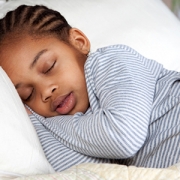Is actigraphy helpful for assessing sleep-wake disorders?

The second most-read article in 2018 in the Journal of Clinical Sleep Medicine, published by the American Academy of Sleep Medicine (AASM), was about using actigraphy to evaluate sleep disorders and circadian rhythm sleep-wake disorders.
FDA-approved actigraphy devices are typically kept on the wrist or ankle and track movement activity, which researchers can use as part of a larger toolset to analyze how much activity occurs right before and during sleep.
The AASM guidelines, entitled “Use of Actigraphy for the Evaluation of Sleep Disorders and Circadian Rhythm Sleep-Wake Disorders: An American Academy of Sleep Medicine Clinical Practice Guideline,” included the AASM’s stance on clinical recommendations for children and adults, rated as strong or conditional.
The conditions for evaluating pediatric health conditions are as follows:
- The AASM suggests that clinicians use actigraphy in the assessment of pediatric patients with insomnia disorder. (Conditional)
- The AASM suggests that clinicians use actigraphy in the assessment of pediatric patients with circadian rhythm sleep-wake disorder. (Conditional)
- The AASM suggests that clinicians use actigraphy to monitor total sleep time prior to testing with the Multiple Sleep Latency Test in adult and pediatric patients with suspected central disorders of hypersomnolence. (Conditional)
- The AASM recommends that clinicians not use actigraphy in place of electromyography for the diagnosis of periodic limb movement disorder in adult and pediatric patients. (Strong)
In an interview with Neurology Today, Daniel Lewin, Ph.D., a sleep medicine specialist, pediatric psychologist and associate director of the sleep medicine program at Children’s National Health System, offered advice, alongside other sleep medicine experts, about the new guidelines:
“It’s a very powerful tool, but it does require some knowledge of basic sleep mechanisms and of how the tool can be used and what variables can be extracted from the tool,” Dr. Lewin said in the interview with Susan Kreimer.
Anne Goldstein, M.D., M.S., assistant professor of neurology at the University of Michigan Sleep Disorders Center, tells Kreimer that “Actigraphy records only movement and that non-moving is often misinterpreted as sleep.”
Dr. Lewin has used actigraphy in sleep research studies but notes the use of these devices come with extensive training. Other researchers expressed similar sentiments with Neurology Today, noting the value of the sleep assessment tool to capture preliminary sleep behavior assessments, similar to a self-reported sleep log, while noting their limitations, such as capturing sleep patterns over extended periods of time, instead of in 14-day increments.
“When you’re living a typical active human life, sleep can wax and wane, depending on travel patterns, work responsibilities and stress levels,” Nathaniel F. Watson, M.D., professor of neurology at the University of Washington School of Medicine in Seattle and director of the UW Medicine Sleep Clinic, tells Kreimer. “This variability in sleep highlights the need for additional technologies capable of assessing sleep over longer periods of time.”



